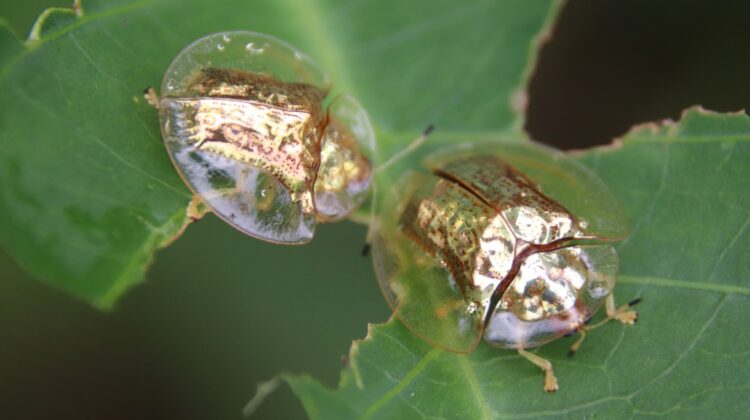
Have you ever heard of a beetle that looks like a tiny golden jewel scurrying across a leaf? Meet the golden tortoise beetle, a fascinating creature that has captured the attention of nature lovers and entomologists alike. Despite its name, this beetle is not a tortoise at all, but rather a member of the leaf beetle family. Its scientific name, aspidimorpha sanctaecrucis, translates to “holy cross shield” in Latin, referring to the distinctive pattern on its carapace that resembles a cross.
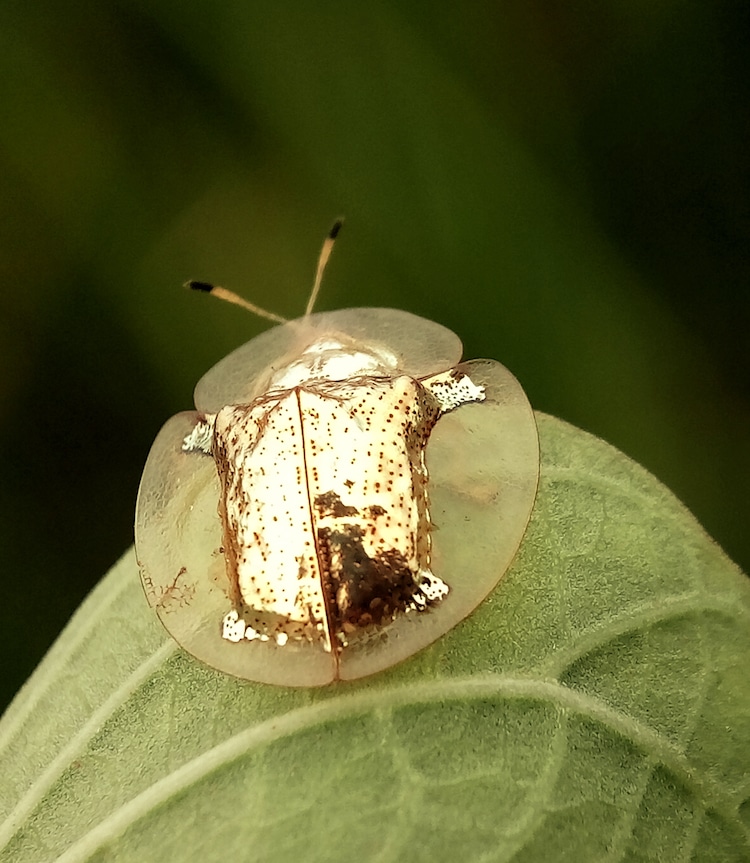
What makes the golden tortoise beetle so mesmerizing is its shimmering appearance. The beetle’s carapace is a stunning combination of gold and translucent hues, creating a unique iridescent effect. The golden color is not just for show, however. It serves as a form of protection against predators, as the beetle can change the color of its carapace to a reddish-brown when threatened, making it less conspicuous.
The golden tortoise beetle is found in Southeast Asia, including countries such as China, Myanmar, Thailand, and Cambodia. They are commonly found on leaves of plants such as sweet potato and morning glory. Despite their striking appearance, they are often hard to spot due to their ability to hide on the underside of leaves.
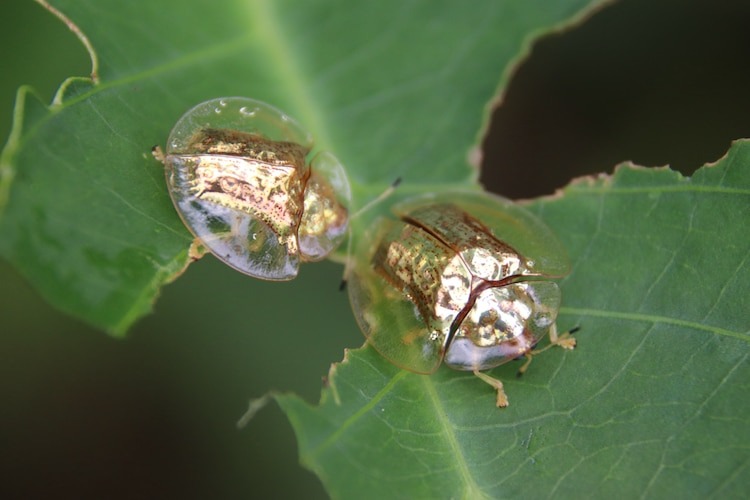
One interesting fact about the golden tortoise beetle is that it is not always golden. In fact, the beetle’s color can change depending on its age, sex, and environment. Juvenile beetles, for example, are often reddish-brown in color and become golden as they mature. Additionally, the beetle’s color can change in response to temperature and humidity, with warmer temperatures often resulting in a brighter golden hue.
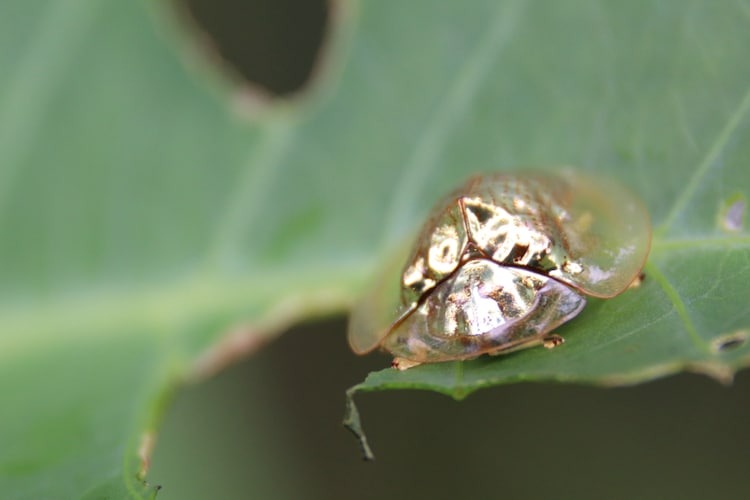
As with many insects, the golden tortoise beetle plays an important role in its ecosystem. They feed on the leaves of plants, which can help control pests and prevent damage to crops. While they may be small in size, their presence is significant.
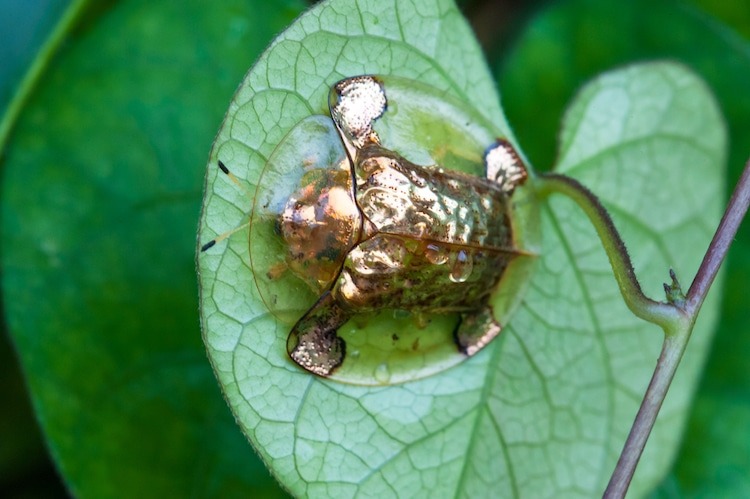


In conclusion, the golden tortoise beetle is a fascinating creature that is truly a jewel of the insect world. Its striking appearance and unique abilities make it a captivating subject for nature enthusiasts and researchers alike. So, the next time you are out exploring nature, keep an eye out for this tiny golden gem scurrying across a leaf.

Leave a Reply